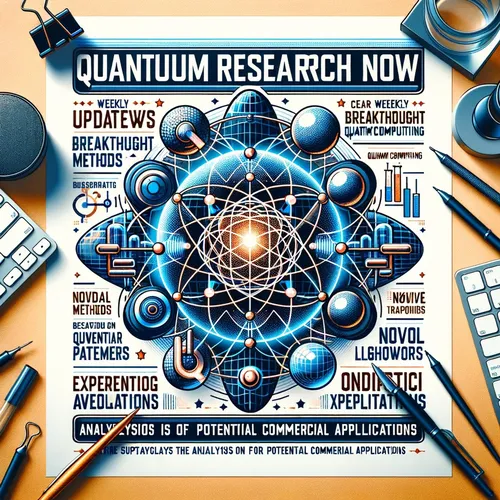D-Wave's Quantum Leap: Solving Real-World Problems at Lightning Speed
- Author
- Quiet. Please
- Published
- Sun 13 Apr 2025
- Episode Link
- https://www.spreaker.com/episode/d-wave-s-quantum-leap-solving-real-world-problems-at-lightning-speed--65557155
This is your Quantum Research Now podcast.
Greetings, quantum explorers. I’m Leo—Learning Enhanced Operator—and welcome to *Quantum Research Now*. Let’s dive into the quantum cosmos, where today we untangle an electrifying development that has sent ripples across the quantum community.
Just this week, D-Wave Quantum announced a breakthrough that could redefine computing as we know it. They claim their quantum annealing system has achieved quantum supremacy *on a useful problem*. Let me break that down. Quantum supremacy is when a quantum computer outperforms the best classical supercomputers for a specific task. The challenge? Proving it matters in the real world. D-Wave didn’t just solve an abstract math problem; their quantum system simulated complex magnetic interactions in materials—a feat that a classical supercomputer would take *a million years* and consume more electricity than the world uses annually.
So what’s the significance? Let’s paint a picture. Imagine you’re trying to find the best way to untangle a ball of yarn knotted in impossible loops. Classical computers work methodically, pulling at one strand at a time. It might take centuries. Quantum computers, however, operate like a team of dexterous hands pulling many threads simultaneously, exploring all possible solutions at once. D-Wave has proven this isn’t just future talk—it’s happening now.
But what powers this quantum magic? At the heart of quantum computing lies the concept of *superposition*, where qubits, the quantum equivalent of classical bits, can exist simultaneously as 0, 1, or a blend of both. Think of a spinning coin—it’s neither heads nor tails until it lands, just as a qubit reflects multiple states until observed. This ability allows quantum machines to process a vast array of possibilities all at once. When combined with *entanglement*, a phenomenon where qubits become interconnected such that the state of one instantly influences the other, quantum systems become exponentially powerful.
D-Wave’s achievement doesn’t just push boundaries; it challenges skeptics who questioned whether quantum systems could tackle pragmatically valuable problems. As Dr. Alan Baratz, D-Wave’s CEO, framed it, this milestone is a rebuttal to doubters who believed functional quantum computing was decades away. It’s as if we’ve gone from the Wright brothers’ first flight to jet-engine prototypes overnight.
Now, stepping back for perspective: how does this fit into the broader quantum landscape? The field is buzzing with monumental advances. IBM is eyeing a quantum-centric supercomputer with 4,000 interconnected qubits by the end of 2025. Google’s Willow chip demonstrated error-corrected computation using 105 qubits. And PsiQuantum, the photon-powered trailblazer, has secured $750 million in funding to scale their operations.
Meanwhile, the United Nations has declared this the International Year of Quantum Science and Technology, underscoring its global importance. Nations and companies are racing to secure leadership in quantum innovations. But quantum supremacy isn’t just about competition; it’s about unlocking solutions to humanity’s hardest problems. From developing new medicines to combating climate change, quantum systems hold the key to modeling molecular interactions or optimizing resource use in ways classical computers could only dream of.
Let me share a glimpse of what’s ahead. Beyond materials science, where D-Wave has already proven its mettle, quantum computing has far-reaching applications. In cryptography, quantum machines are poised to break conventional encryption systems—a double-edged sword, which is why post-quantum encryption methods are already in development. In finance, quantum algorithms could optimize trading, portfolio management, and risk analysis. Even weather prediction, which involves modeling billions of variables, could leap forward with...
